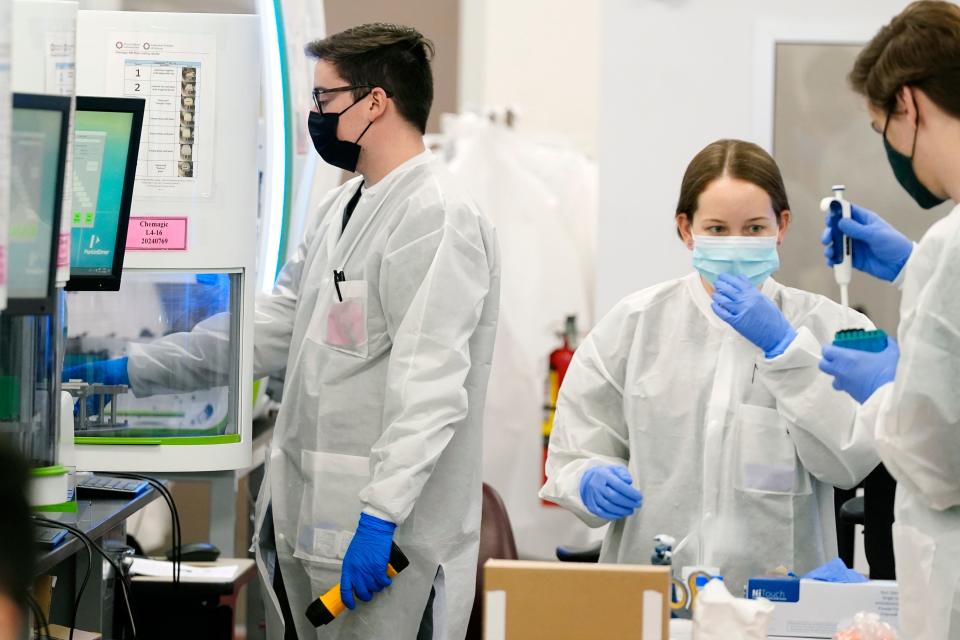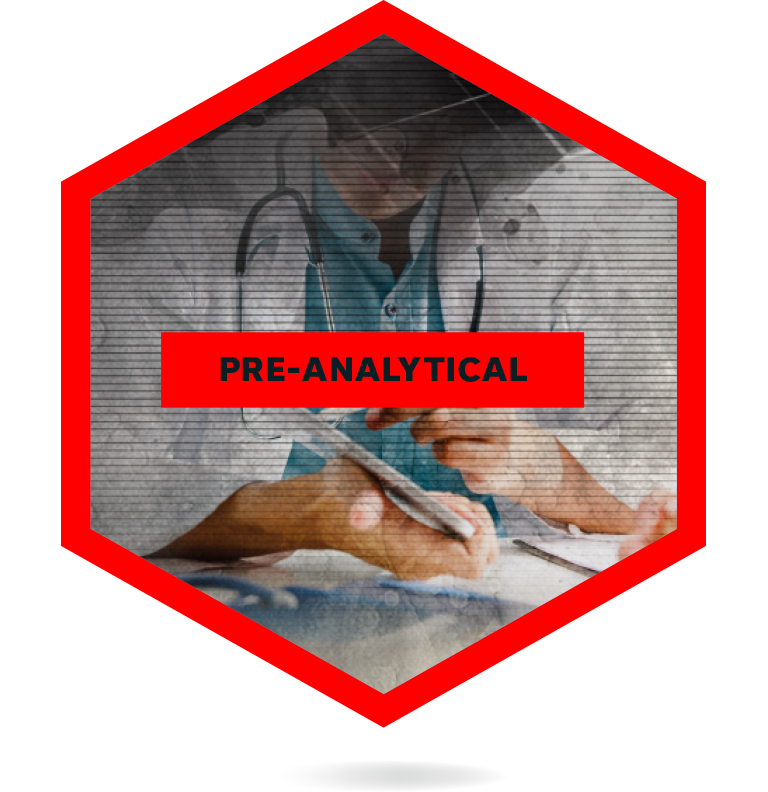Getting a COVID-19 test? Here's the pipeline your samples and results must travel
If you’re an American adult, then your blood, urine, stool or mucus has been tested by a laboratory. This process begins at birth, when every infant receives a heel prick to draw blood and test for various diseases.
This process is also hidden from view. As patients, we give our sample, we receive our result — and that’s all we know.
In between those two events lies a complex pipeline. Thousands of pipelines, actually. Because in America's highly privatized and fragmented health care industry, every doctor’s office, hospital and laboratory must build pipelines of its own. Each pipeline carries test orders, patient information and results between dozens of health care providers and hundreds of software systems. The contours of each pipeline change constantly as new testing technology emerges, and as business relationships evolve.

The very complexity of these systems makes them prone to error.
In diagnostics, errors kill.
“You’ve got to realize that anything we’re doing, if we do it wrong and turn out a bad result? We could kill somebody,” said Bob Roggeman, who recently managed construction for Quest Diagnostics of the company’s newest and biggest laboratory. “That’s the pressure you’re under. We have to make sure we get it right.”
Throughout the pandemic, voters and elected officials became transfixed by the raw total of tests the nation could perform, and whether it was enough to slow the spread of COVID-19. This concern was justified, especially in the pandemic’s early stages, when the United States simply lacked the number of test machines required to track new variants or perform effective contact tracing.
To lab industry insiders, however, the test is the easy part. The testing pipeline is hard.
“I’m a lab guy. I like technology. Look at this big fancy instrument we have,” said David Peaper, director of the medical microbiology lab at Yale New Haven Hospital. “No one gets excited about making an appointment, standing in line, collecting the specimen, or the stupid barcode. But if the specimens don’t get to the lab, we can’t do anything.”
Without data and logistics systems connecting test machines to the rest of the world, America’s vast diagnostics infrastructure fails. Or, as Peaper puts it, “Everyone dramatically underestimates the pre- and the postanalytical challenges.”
Here are some of the most important steps in the pipeline, and why they’re so challenging:

Patient schedules an appointment for testing. During normal times, doctors prescribe most tests. During the COVID-19 pandemic, many patients scheduled tests themselves by going online. Either way, the patient enters an existing pipeline of logistics, data, commercial relationships and legal contracts the moment she schedules a test. This pipeline controls the flow of her bodily sample and her personal information throughout the entire process.
Patient gives a sample. Sample sites may be run by doctors, hospitals, clinics, outside vendors or laboratories. Quest Diagnostics and Labcorp each run a network with thousands of sample sites. Both companies also contract with doctors and hospitals to place Quest and Labcorp employees inside high-volume doctors’ offices. There, they provide “white glove” service. Patients never learn that their phlebotomist is employed by Quest or Labcorp unless they ask. Whichever institution runs the sample site also trains and equips its workers with PPE and other equipment to handle different types of samples. Venous blood draws require needles; COVID tests require face shields.
Logistics. The patient’s sample must be sent from the draw site to the laboratory. For a local hospital, this may be as simple as contracting with an outside company to provide a fleet of vehicles and courier drivers. For Labcorp and Quest, it requires complex national logistics operations involving sophisticated computers and thousands of vehicles. Each large lab company also owns a private cargo airline to ship samples across the country.
Indexing tests. Each sample receives a barcode. Upon arrival at the lab, each barcode is scanned. This scan performs many jobs simultaneously. It uploads the patient’s medical data into the lab’s computers. It also determines the routing for each sample throughout the lab. Some samples require hands-on attention by a laboratory technician. Most will be loaded directly onto a conveyor belt for testing inside a high-throughput machine.
Test equipment. For the sake of simplicity, doctors prefer to send most of their samples to a single lab for testing. Each lab must figure out how to meet doctors’ testing needs and make a profit, even though some tests lose money. This requires a complex juggling act. Some tests require expensive machinery. Others require slow work by hand. In either case, the lab director may decide to save money by hiring an outside lab to perform the work. More complication is added by the federal government’s bipolar regulation of laboratories. Some tests are regulated as medical devices by the FDA. In other cases, lab directors can create their own laboratory-developed tests, or LDTs. Often called “homebrews,” LDTs are cheaper to run because labs can swap in cheaper materials than those used in FDA-approved tests, and because LDTs themselves aren’t overseen by the FDA. Rather, any laboratory performing tests developed internally is regulated by the Centers for Medicare & Medicaid Services, which pays for the plurality of lab tests in the United States, and which delegates its oversight authority to nonprofit groups including the College of American Pathologists. Each lab performs its own mix of FDA-approved, lab-developed and outsourced tests. Each lab’s mix changes over time.
Run the test. This is the easy part. Most modern diagnostic tests use spectrometry. Enzymes and chemicals are added to the sample. Then the sample is blasted with light. The light bounces through at varying wavelengths. Different wavelengths indicate a positive or negative result for a given condition.
Communicating results. The test result and other patient data must be communicated to different people. Ideally, recipients include the patient and every doctor, hospital and clinic the patient sees regularly. In special cases, such as COVID, the result may also be needed by local, state and federal public health agencies, and by the patient’s employer. This notification process sounds simple. It’s not. For it to work, each party in the chain must be able to send and receive medical data with all the others in ways that conform to federal privacy law. Data connections between big hospital chains often fail. Connections between private health care companies and public health agencies usually don’t exist. Some notifications also require legal review. For example, union contracts may bar labs from sending results directly to employers.
Parsing data. Every step in the pipeline, from scheduling a sample to receiving the result, requires data to pass within and between institutions. Each institution runs its own stack of software. Within the stack, every application may be written by a different vendor. In some cases, applications within a single stack don’t communicate well. Often, one stack can’t communicate with other stacks. As data travels from a hospital to a lab, for example, it passes through different software from dozens of different vendors. Each handoff is an opportunity for error to creep in, and for data to drop out.
Christopher Maag is a columnist for NorthJersey.com. To get unlimited access to his unique perspective on New Jersey’s most interesting people and experiences, please subscribe or activate your digital account today.
Email: maag@northjersey.com
Twitter: @Chris_Maag
This article originally appeared on USA TODAY: How COVID test samples and results travel in the US

